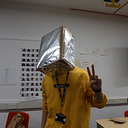11/02/21-25/03/21 (6 weeks)
📃Brief: Design a way to mitigate the effects of loneliness.
🤝Group Members: Alex Newson, Cat Achieng, Damul Yang, Huijie Xiong (Rikkie), Maria Carolina Séves, Tiana Robison Randriaharimalala, Sue An, Yiwei Han (David).
👁🗨External Partner: R/GA — Zoha Zoya, Matthew Chokshi.
This is a new six-week module — Macro UX — designed to work with an external agency to share a project. It is an honour to be working with R/GA on this project, exploring the design theme of mitigating the effects of loneliness.
Briefing:
During the Brief-Lauch Day Presentation, Zoha and Matthew gave us a brief introduction to the background and history of R/GA (an interesting insight into the trajectory of the design industry) and then introduced us to the brief, and here are some key points:
Background: Loneliness as a new global epidemic can harm people’s physical and mental health and behaviour. The outbreak of the epidemic and lockdown cut off normal social interaction and physical contact and exacerbate the growth of loneliness.
Target group: A disproportionately socially neglected group of people suffering from loneliness — Young people.
Goals: Attention should be paid to the study of loneliness effects, the exploration of various creative or experimental approaches, the experimentation with a range of physical materials and digital technologies. Not to solve or get rid of loneliness but as a way to mitigate or counterbalance.
Research Method
After understanding the basic objectives of the project, we actively carried out a lot of research. We started with Literature Review for inspiration and potential directions and then conducted Directly Storytelling with 14 targets to explore the causes of loneliness and ways to overcome it.
Synthesis & Analysis
I summarised all the behaviours that respondents mentioned mitigating their loneliness and how these behaviours made them feel. I found that most of the activities were still predominantly of the independent type; all activities mainly brought a sense of connection, achievement, pleasure and relaxation.
We also did a Benchmark to analyse the scenarios and strengths and weaknesses of some design cases for loneliness. After synthesis of Literature Review and Directly Storytelling, we came up with several potential opportunities from theoretical and practical stories. We found that creative activities help to alleviate loneliness. So we conducted experiments to explore new creative activities at home using everyday objects. This practice inspired Alex to start exploring playful LARP later on.
Next Step
After all this research and exploration, we developed two directions: 1. to change the negative perceptions and connotations of loneliness to a positive perspective; 2. to combat loneliness through creative activities, such as LARP. At the first presentation, our mentor pointed out the risk of our first idea being too idealistic and over-simplified. So we started to reorient ourselves.
Reflection
The collaboration of eight people enriches the whole design process; but communicating and understanding each other is more challenging and requires more time and patience. In this process, individual communication and communication skills, understanding and resilience were all honed.
📚Reference:
Sweet, J. (2020). The Loneliness Pandemic. Harvard Magazine. Available at: https://harvardmagazine.com/2021/01/feature-the-loneliness-pandemic (Accessed 17 Feb. 2021).
University of Cambridge (2020). Almost a quarter of adults living under lockdown in the UK have experienced loneliness. Available at: https://www.cam.ac.uk/research/news/almost-a-quarter-of-adults-living-under-lockdown-in-the-uk-have-experienced-loneliness (Accessed 17 Feb. 2021).
Office for National Statistics (2021) Coronavirus and loneliness, Great Britain. Available at: https://www.ons.gov.uk/peoplepopulationandcommunity/wellbeing/bulletins/coronavirusandlonelinessgreatbritain/3aprilto3may2020#measuring-the-data (Accessed: 17 April 2021).
Cacioppo, S., Grippo, A.J., London, S., Goossens, L. and Cacioppo, J.T. (2015). Loneliness: Clinical Import and Interventions. Perspectives on Psychological Science, 10(2), pp.238–249.
